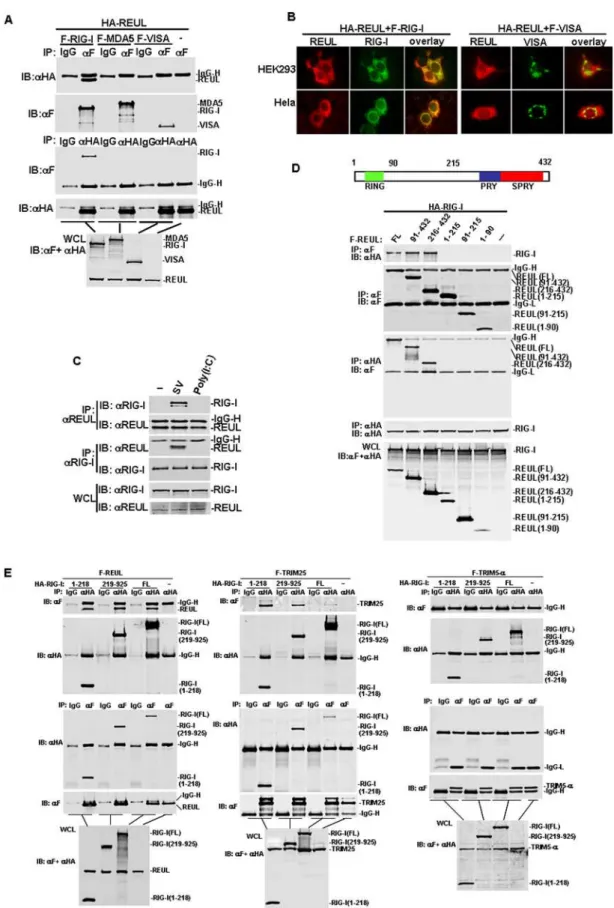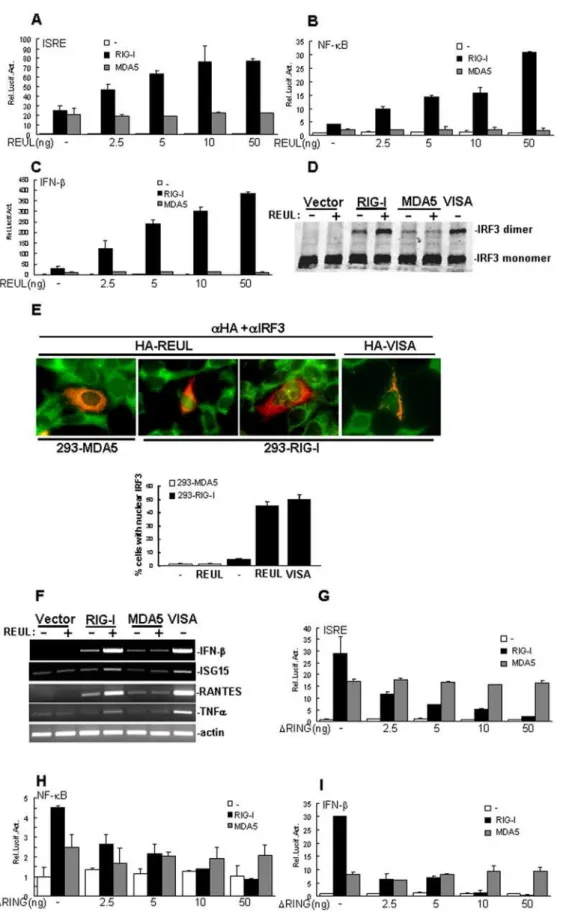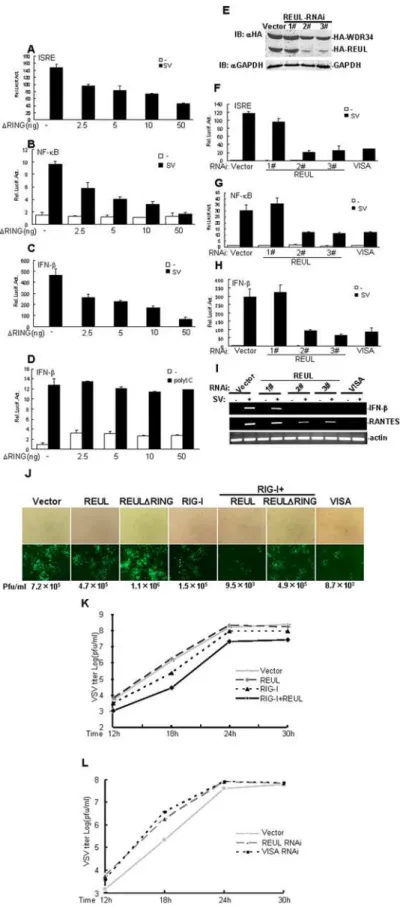REUL is a novel E3 ubiquitin ligase and stimulator of retinoic-acid-inducible gene-I.
Texto
Imagem




Documentos relacionados
Single stranded RNA (ssRNA) virus infection activates the retinoic acid inducible gene I (RIG-I)- mitochondrial antiviral signaling (MAVS) complex, a complex that coordinates the
An accumulation of SUMO chains also causes the extreme genome instability and cell cycle phenotypes of fission yeast that lack the SUMO-targeted E3 ubiquitin ligase (STUbL) Slx8-Rfp1
Both p62 and ubiquitin were recruited to mycobacteria in DC2.4 cells transfected with Atg5 siRNA, but the depletion of p62 decreased the ubiquitination of mycobacteria in these
Next, to determine what ligand stimuli could induce potent type I IFN production in pso- riasis patients by RIG-I dependent manner, we isolated three psoriasis patients ’ PBMCs
To determine whether the E3 ubiquitin ligases were capable of promoting Glis3 ubiquitina- tion as a result of their interaction, FLAG-Glis3 or the PY 461 mutant was co-expressed
Recent- ly, GRAIL (the E3-ubiquitin ligase gene related to anergy in lymphocytes) was shown to be responsible for the Th2 hypore- sponsiveness in a mouse model of
MAVS was immunoprecipitated from the cell extracts at different times post- infection and the presence of PKR and RIG-I was examined in the immunocomplexes, as well as that of
FLAG-tagged RIG-I or RIG-I RD expression vector was transfected into HEK293FT cells together with HA-tagged IKK- e (A, B, and E), Myc-tagged TBK1 (C, F), HA-tagged NEMO
